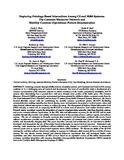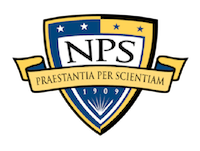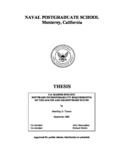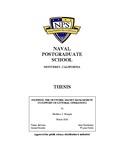Exploring Ontology-Based Interactions Among C2 and M&S Systems: The Common Maneuver Network and Mobility Common Operational Picture Demonstration

Download
Author
Blais, Curtis L.
Gates, Buhrman Q.
Nagle, Joyce A.
Burk, Robin K.
Goerger, Niki C.
Richmond, Paul W.
Date
2008Metadata
Show full item recordAbstract
Achieving semantic interoperability between simulation systems and Command and Control (C2) systems continues to be a challenging area of research and development. One area of considerable study is development of a common representation of the maneuver network to obtain consistency in the results computed by simulations and C2 systems when determining how a ground force will move through some portion of the battle space. The Common Maneuver Network (CMN) program has implemented and demonstrated the ability to obtain consistent results from the One Semi-Automated Force (OneSAF) and an Army C2 system (Army Battle Command System). Moreover, the Army's Assured Mobility concept calls for establishing the mobility common operational picture (M-COP) facilitating command decision-making regarding how best to deploy, move, and maneuver, by ground or vertical means, where and when desired, without interruption or delay, to achieve the intent. The Department of Defense Global Information Grid (GIG) will play a central role in composing the M-COP as a focus area of interest to land warfare decision makers. Network centric operations require the integration of complex communications networks, data from disparate sources, and service-oriented software applications. In the GIG, data and information necessary for the M-COP will be made available through discoverable and callable web-based services to the spectrum of users, software agents, and software systems. The use of ontologies to formally represent data semantics and knowledge combined with service based software architectures provides new opportunities for the integration of command and control systems, simulations, models, and dynamically changing data. This paper describes concepts and architecture for an experiment to further investigate and demonstrate the use of knowledge-based technologies to support tactical maneuver. Automated route planning, route monitoring and intelligent software-initiated route changes are provided in response to unexpected external events such as reports of improvised explosive device (IED) incidents. We discuss the utility of the M-COP ontology for real-time software-based sense-making in response to battlespace data streams fed by a variety of sensor systems. We also discuss lessons learned and planned follow-on experiments that will investigate higher scale capabilities and other characteristics of GIG services based on an expanded version of this initial demonstration prototype, including integration with emerging Simulation Interoperability Standards Organization (SISO) standards such as the Coalition Battle Management Language (C-BML).
Description
Simulation Interoperability Standards Organization (SISO) SIW Conference Paper
Rights
This publication is a work of the U.S. Government as defined in Title 17, United States Code, Section 101. Copyright protection is not available for this work in the United States.Collections
Related items
Showing items related by title, author, creator and subject.
-
U.S. Marine specific software interoperability requirements of the AFATDS and IOS software suites
Thome, Geoffrey D. (Monterey, California. Naval Postgraduate School, 2002-09);The Marine Corps has several Tactical Combat Systems at the Infantry Division level and below. The Information-Operations Server Version 1 (IOS v. 1) is a command and control (C2) system with a client-server architecture ... -
Achieving Better Buying Power for Mobile Open Architecture Software Systems through Diverse Acquisition Scenarios
Scacchi, Walt; Alspaugh, Thomas A. (Monterey, California. Naval Postgraduate School, 2017-05); UCI-AM-17-041This research seeks to identify, track, and analyze software component costs and cost reduction opportunities within diverse acquisition life cycle scenarios for open architecture systems accommodating Web-based and mobile ... -
Fighting the network: MANET management in support of littoral operations
Maupin, Matthew S. (Monterey, California: Naval Postgraduate School, 2016-03);Advances in computer processing and communications capabilities have contributed to the recent explosion of mesh network technologies. These technologies’ operational benefits are of particular interest for those operating ...


 08S-SIW-005-PDF.pdf (235.1Kb)
08S-SIW-005-PDF.pdf (235.1Kb)

